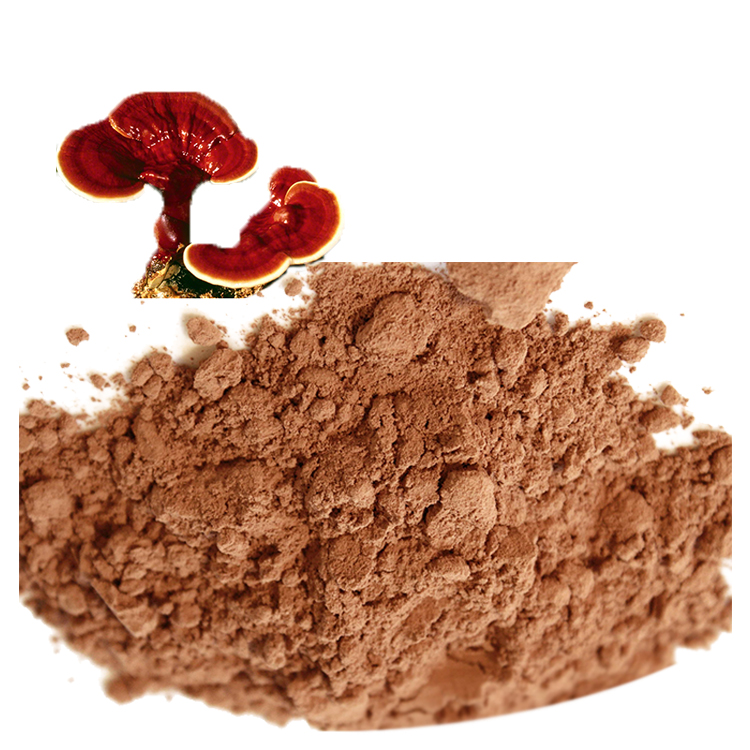Introduction
With the increasing global demand for medicinal mushrooms, particularly Ganoderma lucidum (Lingzhi or Reishi), more manufacturers and brands are seeking reliable sources of Ganoderma extract for use in dietary supplements, food, beverages, and functional products. However, the quality of raw materials can vary significantly between suppliers. The ability to accurately evaluate and select high-quality suppliers is crucial for product safety, regulatory compliance, and brand reputation. This article provides a detailed step-by-step guide on how to identify high-quality suppliers of Ganoderma extract, Ganoderma lucidum extract, Lingzhi extract, and Reishi mushroom extract, outlining key indicators and best practices throughout the sourcing process.
1. Assessing Supplier Credentials and Reputation
1.1 Business Qualifications and Certification
Start by reviewing the supplier’s business licenses, export permits, and any official certificates relevant to the production and export of Ganoderma extracts. Look for evidence of:
GMP (Good Manufacturing Practice) certification
ISO 9001 (Quality Management) and ISO 22000 (Food Safety) standards
Organic Certification (if sourcing organic Lingzhi extract)
Third-party laboratory test reports
Suppliers that maintain these certifications are more likely to adhere to strict quality management systems, traceability, and regulatory compliance.
1.2 Industry Reputation
Search for reviews, client feedback, and track records within the herbal or nutraceutical industry. Suppliers with long-standing business relationships, published case studies, and positive testimonials often deliver more consistent quality.
2. Evaluating Quality Control and Testing Capabilities
2.1 Laboratory Testing and COA
Every batch of Ganoderma extract should come with a Certificate of Analysis (COA) from a qualified laboratory. Essential testing items include:
Polysaccharide and triterpene content (key actives for Ganoderma lucidum extract)
Identity authentication (species verification, e.g., via DNA barcoding)
Microbiological safety (absence of pathogens like Salmonella, E. coli)
Heavy metals (e.g., lead, arsenic, mercury, cadmium)
Pesticide residues (especially for organic extracts)
Residual solvents (for extracts produced using solvents)
Verify that the lab is accredited (e.g., ISO/IEC 17025) and, where possible, request third-party test results for added assurance.
2.2 In-House QC Procedures
Reliable suppliers invest in in-house quality control systems that cover raw material acceptance, in-process inspections, finished product testing, and full traceability. Ask for documentation of their standard operating procedures (SOPs), batch records, and recall processes.
3. Supply Chain Transparency and Traceability
3.1 Source of Raw Material
High-quality suppliers can provide full traceability for their Ganoderma raw materials—from farm or cultivation base to processing facility. Key questions to ask:
Where is the Ganoderma grown?
Is it wild-harvested, organically farmed, or conventionally cultivated?
Are agricultural practices documented and audited?
Traceability is critical for confirming the authenticity and purity of Lingzhi extract and reducing the risk of adulteration.
3.2 Harvesting and Processing Controls
Examine how the supplier controls the timing of harvest, post-harvest handling, drying methods, and extraction processes. Proper drying and gentle extraction are essential to preserve bioactive compounds and minimize contaminants.
4. Factory Audit and On-Site Evaluation
4.1 Facility Inspection
If possible, conduct an on-site audit or virtual tour. Observe the following:
Facility hygiene and layout
Separation of raw material and finished product areas
Condition and calibration of production and analytical equipment
Staff training and use of personal protective equipment (PPE)
4.2 Documentation Review
Review documentation on:
Supplier’s quality management system
Batch records and product traceability
Pest control and environmental monitoring
Training logs and employee certifications
5. Business Practices and Support
5.1 Communication and Responsiveness
High-quality suppliers are transparent, responsive, and proactive in communication. They should answer questions promptly, provide technical support, and assist with documentation for customs or regulatory compliance.
5.2 After-Sales Support
Reliable suppliers offer clear return policies, support with product recalls if necessary, and are willing to work with clients to resolve quality or logistics issues.
5.3 Supply Capacity and Flexibility
Assess the supplier’s ability to deliver consistent volumes, accommodate special specifications, and scale production if needed. Reliable suppliers will be honest about their capacities and lead times.
6. Key Red Flags: How to Spot Low-Quality Suppliers
Lack of or incomplete documentation (e.g., missing COA, certifications)
Inconsistent product appearance or labeling
Unwillingness to allow audits or facility visits
Absence of third-party test reports
Very low pricing compared to market average (may indicate adulteration or low potency)
Conclusion
Identifying high-quality suppliers of Ganoderma extract, Ganoderma lucidum extract, Lingzhi extract, and Reishi mushroom extract requires a systematic approach that covers supplier credentials, laboratory testing, traceability, production controls, and ongoing communication. By applying rigorous evaluation criteria and maintaining open communication, buyers can minimize risks and ensure the consistent quality and safety of their Ganoderma products in global markets.
Read More:
Key Considerations for Controlling Residual Solvents and Heavy Metals in Ganoderma Raw Materials
Why Global Wellness Brands Are Seeking Organic Mushroom Powder OEM Partners
Hangzhou Molai Biotech Co., Ltd has supply capacity 1200+ tons per year for mushroom powders and extracts, including the mushroom mycelium from modern technology of Deeply Liquid Fermentation and fruiting bodies from the grown real mushrooms to meet the different markets.
Hangzhou Molai Biotech Co., Ltd supplies the products both in Powders and Extracts for commercial using worldwidely, such as Cordyceps Sinensis, Cordyceps Militaris, Maitake Mushroom, Lion’s Mane Mushroom, Turkey Tail Mushroom, Reishi Mushroom, Chaga Mushroom etc.
We offer OEM and ODM services, could extract the products according to your special requirements, process the powders/extracts into Capsules, Tablets, Small Bags, Mushroom Bars, Mushroom Coffee etc.
Organic Lion's Mane Mushroom Extract
Organic Reishi Mushroom Extract
Organic Cordyceps Militaris Extract
Organic Turkey Tail Mushroom Extract
Organic Chaga Mushroom Extract
Organic Shiitake Mushroom Extract
Organic Maitake Mushroom Extract
Organic Tremella Mushroom Extract






